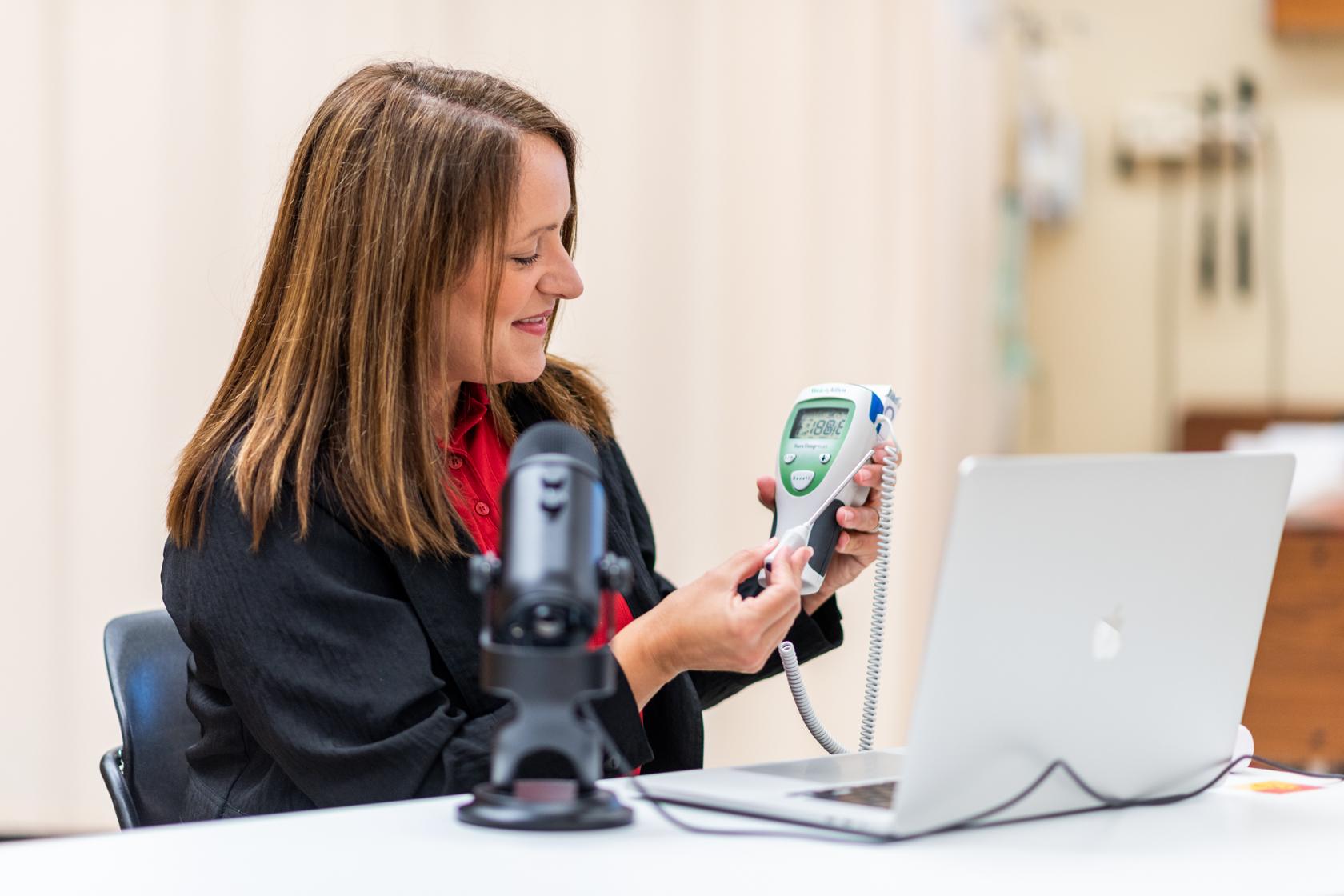School of Nursing to implement telemedicine in coursework
Thursday, July 29, 2021 9:00 AM
News, Alumni, Academics, People and Society, Science and Technology
Pittsburg, KS

When students start courses this fall in the Irene Ransom Bradley School of Nursing, they’ll have an opportunity to learn how to serve patients via telemedicine, thanks to a $78,000 grant awarded to help nursing schools respond to the pandemic.
But what they’ll learn will last far beyond the pandemic, says Anna Beth Gilmore, an instructor in the IRBSON who focused on implementing the curriculum as her scholarly project to complete her Doctor of Nursing Practice degree.
It will be not only valuable to their future patients, but valuable on their resumés.
“It adds another level of distinction for our students,” she said. “Employers will find it valuable in today’s world.”
Gilmore consulted with experts at Old Dominion University Center for Telehealth, Innovation, Education, and Research, who developed the curriculum, and the grant funding was used to purchase telehealth equipment.
“We first got a taste of the value of telemedicine during the pandemic last year,” she said. “Now, telemedicine classes will be a permanent part of our curriculum in every course.”
Telemedicine, or health care delivery from a distance, can be valuable to those in rural communities far from large medical centers; all that’s needed is an internet connection.
“If a patient in western Kansas needs to see a cardiologist in Wichita or Kansas City, they can travel to their primary care provider’s office, use telemedicine with a specialist, get their orders and not have to leave their town,” Gilmore said. “Or, if they have internet at home, they can do it from there.”
While telemedicine hadn’t really “taken off” in this area, Gilmore said, the pandemic “pushed it to the next level.”
“It soon became evident that it was critical that we meet the needs of patients in whatever way was necessary,” she said.
Telemedicine can be used for videoconferencing, the remote monitoring of devices such as blood sugar, the sharing of patient documents, discussing a diagnosis and next steps, and more.
“The biggest reason nurses need to know about telehealth is that we don’t want quality of care to become lacking – we don't want it to be a lazy way of doing something,” Gilmore said. “We want to meet patient needs as closely as in person as we can.”
It’s vital, she said, that with telemedicine comes thinking outside the box.
“Nurses are sometimes reluctant to do telehealth, so we’re teaching the value of it, the benefit of it, and we will incorporate it into every course of the curriculum as a common thread,” Gilmore explained. “Even if COVID gets under control, we’ll still need to know how to utilize it in a quality way.”
Leadership
In addition to completing her DNP, Gilmore also has another unofficial badge of distinction in the world of nursing leadership: She coordinated 15 COVID vaccine clinics for students with the Crawford County Health Department and together they served nearly 5,000 people.
Learn more about the Irene Ransom Bradley School of Nursing.